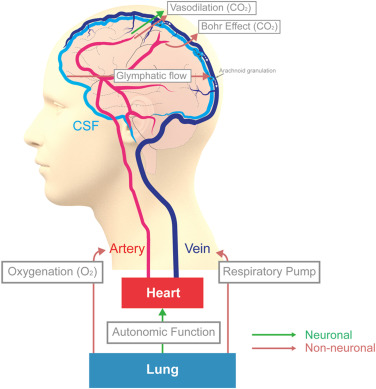2025 Cardiorespiratory Dynamics in the Brain: Review on the Significance of…
페이지 정보

본문
Cardiorespiratory signals have long been treated as "noise" in functional magnetic resonance imaging (fMRI) research, with the goal of minimizing their impact to isolate neural activity. However, there is a growing recognition that these signals, once seen as confounding variables, provide valuable insights into brain function and overall health. This shift reflects the dynamic interaction between the cardiovascular, respiratory, and neural systems, which together support brain activity. In this review, we explore the role of cardiorespiratory dynamics—such as heart rate variability (HRV), respiratory sinus arrhythmia (RSA), and changes in blood flow, oxygenation, and carbon dioxide levels—embedded within fMRI signals. These physiological signals reflect critical aspects of neurovascular coupling and are influenced by factors such as physiological stress, breathing patterns, and age-related changes. We also discuss the complexities of distinguishing these signals from neuronal activity in fMRI data, given their significant contribution to signal variability and interactions with cerebrospinal fluid (CSF). Recognizing the influence of these cardiorespiratory dynamics is crucial for improving the interpretation of fMRI data, shedding light on heart-brain and respiratory-brain connections, and enhancing our understanding of circulation, oxygen delivery, and waste elimination within the brain.
관련링크
- 이전글Abnormal Brain Functional Connectivity in Patients with Chronic Obstructive Pulmonary Disease and Correlations with Clinical and Cognitive Parameters 25.03.30
- 다음글Quantitative Biosignal Measurement Methods for Architecture and Construction 24.07.16
댓글목록
등록된 댓글이 없습니다.


